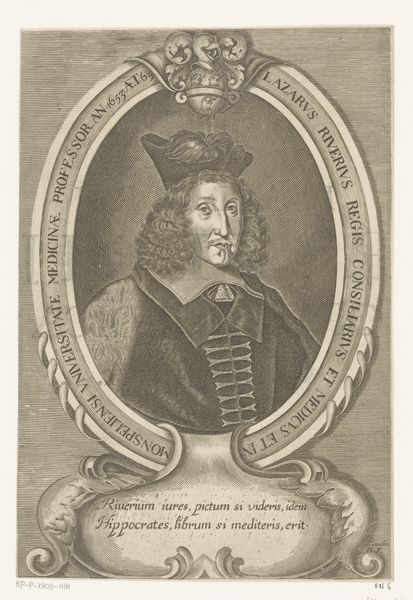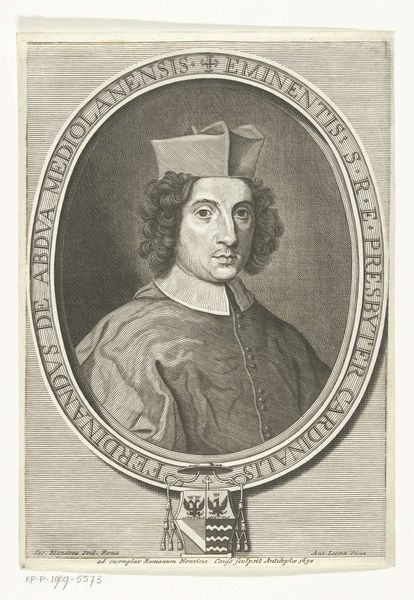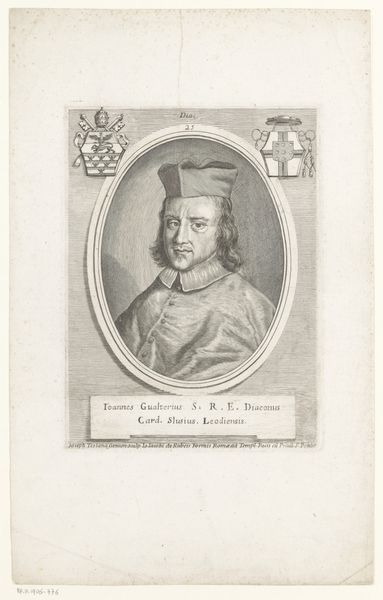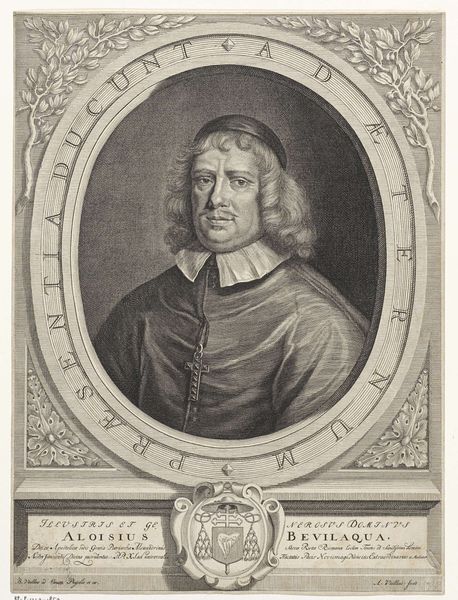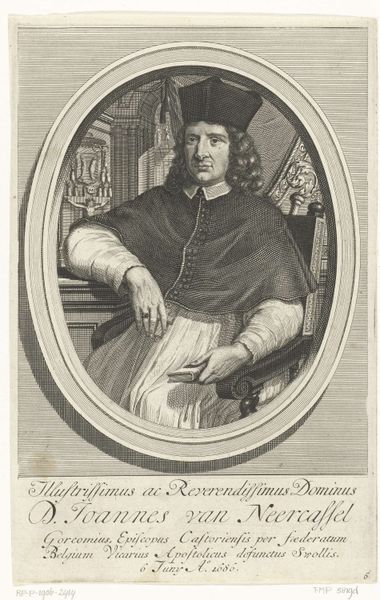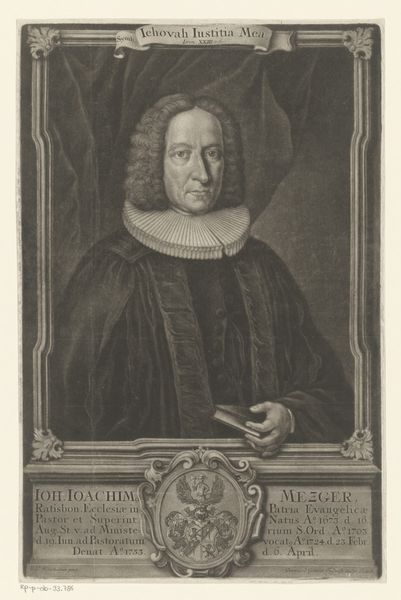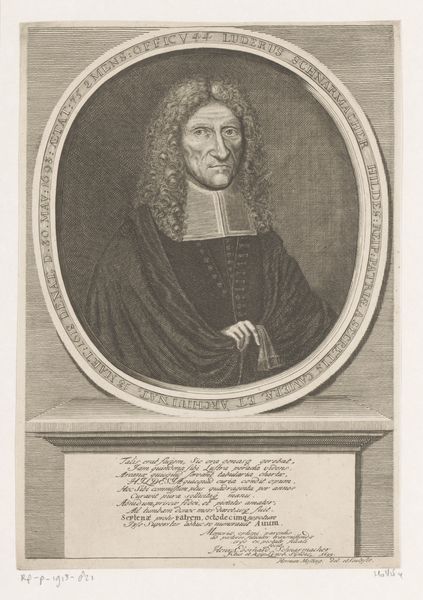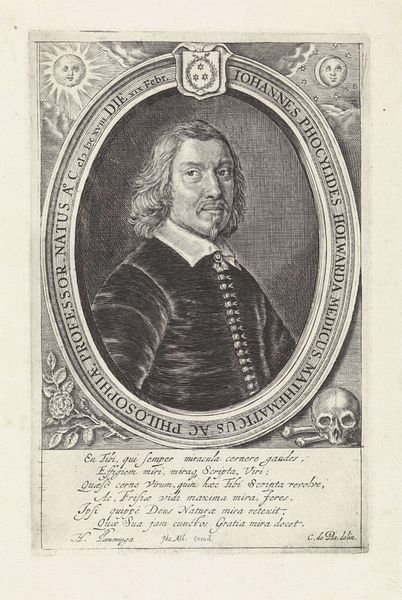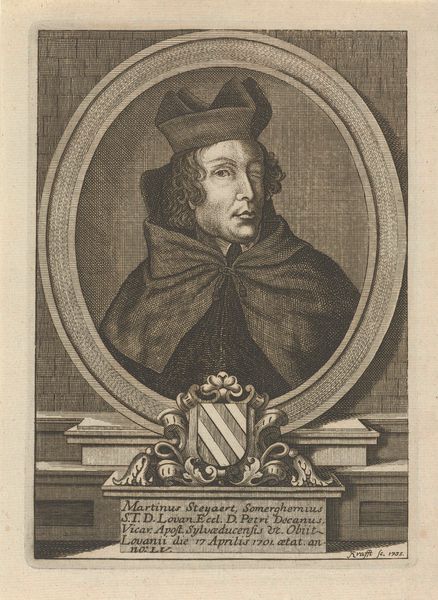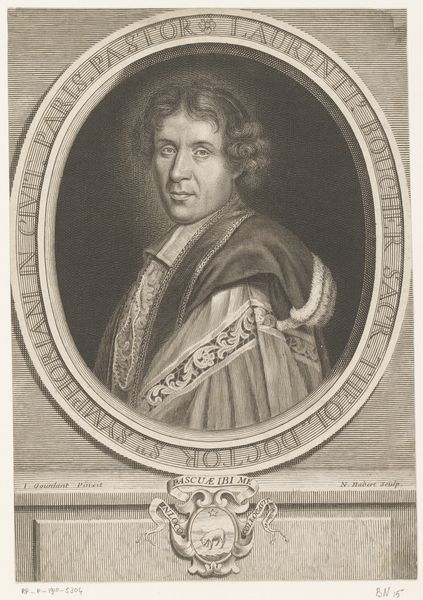
engraving
#
portrait
#
baroque
#
old engraving style
#
portrait reference
#
portrait drawing
#
history-painting
#
engraving
Dimensions: height 186 mm, width 134 mm
Copyright: Rijks Museum: Open Domain
Curator: Well, this is an engraving, “Portret van Johannes van Neercassel,” created sometime between 1686 and 1715, attributed to Pieter Pickaert. It depicts a clergyman in formal attire, presented within an oval frame. Editor: My first impression is that the engraving exudes a serious tone. The subject’s intense gaze and the stark contrasts in the lines contribute to a sense of solemnity and authority. I am curious about the labor needed to carve such small and neat lines for an engraving. Curator: Pieter Pickaert was a prolific engraver, and his choice of engraving speaks volumes. In that era, engravings like this had considerable distribution and could cement someone's reputation for posterity, especially when the printing press made mass production viable. The lines would be incised in a plate—typically metal—inked, and pressed on paper. The number of steps, techniques and skill needed meant that the engraving was seen as both artisanal and refined. Editor: I think it’s interesting how portraits like this acted as a form of visual propaganda. Think about who could afford to commission such an image and its distribution network. Surely, that access was limited by money. By circulating this image, the Church asserted its influence and its power over society at large. It solidifies his place in the historical narrative, carefully constructing a particular image of him for the masses. Curator: And consider that Pickaert wasn't simply creating art; he was engaging in a form of reproduction deeply rooted in the burgeoning print industry. This industry made visual information much easier and faster to convey, shaping public perception on an unparalleled scale. Editor: Seeing the work through this lens underscores the intertwined relationship between artistic skill, social power, and historical narrative. It is about image cultivation and control over collective memory, and how even now those strategies remain quite resonant. Curator: Absolutely. This deep dive only enriches our experience and highlights art as not only a reflection, but also a driver of societal shifts. Editor: Yes, it reminds me that art isn’t just about aesthetics; it’s also about production, influence and enduring impact.
Comments
No comments
Be the first to comment and join the conversation on the ultimate creative platform.
